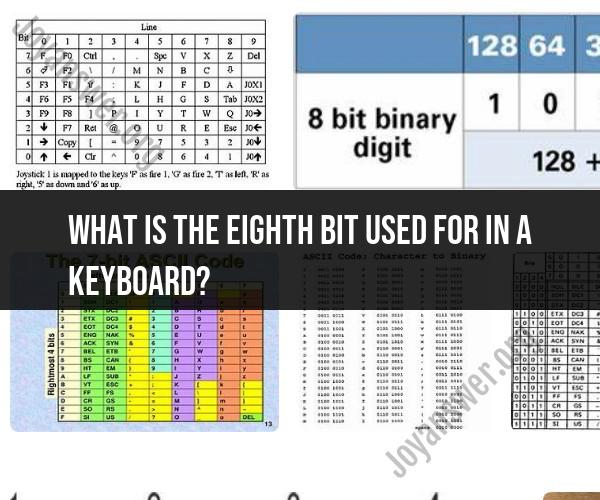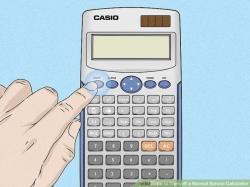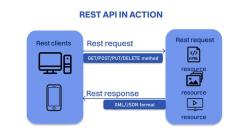What is the eighth bit used for in a keyboard?
In a traditional computer keyboard, the eighth bit is not typically used for any specific keyboard function. Instead, the eighth bit is generally part of the data transmitted by the keyboard to the computer as part of a key press event. Keyboards send data using a protocol that includes information about which key was pressed, along with details about the key's state (pressed or released).
Typically, this data is sent using 8 bits per character, where each bit represents a binary value (0 or 1). The eight bits are used to represent characters, key codes, and modifiers, and the data is usually transmitted serially to the computer. The computer's operating system and keyboard driver interpret this data to recognize which key was pressed and perform the associated action, such as displaying the corresponding character on the screen or triggering a specific function if it's a special key.
The first seven bits are used to represent the character or key code, while the eighth bit is often used for error-checking and parity. Parity is a method used to detect errors in data transmission. It can be even parity or odd parity, which means that the eighth bit is set to ensure that the total number of "1" bits in the eight bits (including the parity bit) is either even or odd, depending on the chosen scheme. This is done to enhance the accuracy of data transmission and detect errors in key presses or data transmission.
In summary, the eighth bit in a keyboard's data transmission is not used for a specific keyboard function but is primarily used for error-checking and data integrity during communication between the keyboard and the computer.
What is the eighth bit used for in a keyboard's data transmission?
The eighth bit in a keyboard's data transmission is typically used as a parity bit. A parity bit is a bit that is added to a data stream to check for errors. There are two types of parity bits: even parity and odd parity.
- Even parity: The parity bit is set to 1 so that the total number of 1 bits in the data stream is even.
- Odd parity: The parity bit is set to 1 so that the total number of 1 bits in the data stream is odd.
How does the eighth bit contribute to keyboard communication?
The eighth bit contributes to keyboard communication by helping to ensure that data is transmitted accurately. When the keyboard transmits a character, it also transmits a parity bit. The receiving device calculates its own parity bit for the incoming data and compares it to the parity bit that was transmitted. If the two parity bits are different, the receiving device knows that an error has occurred.
Is the eighth bit in a keyboard significant for error detection?
Yes, the eighth bit in a keyboard is significant for error detection. The parity bit can be used to detect single-bit errors, which are the most common type of error that occurs in data transmission.
What happens if the eighth bit is lost in keyboard data transmission?
If the eighth bit is lost in keyboard data transmission, the receiving device will not be able to calculate the parity bit for the incoming data. This means that the receiving device will not be able to detect any single-bit errors that may have occurred in the data transmission.
Can you explain the role of parity bits in keyboard communication?
Parity bits play an important role in keyboard communication by helping to ensure that data is transmitted accurately. By detecting single-bit errors, parity bits can help to prevent errors from being displayed on the screen or from being transmitted to other devices.
Parity bits are not perfect, but they are a simple and effective way to improve the reliability of keyboard communication.











